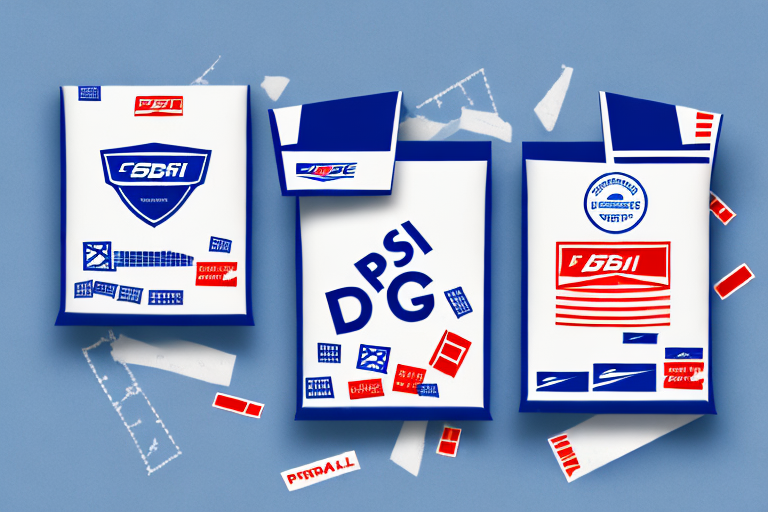Comparing USPS Ground and Priority Shipping Options
Shipping options can be confusing, especially when it comes to choosing between USPS Ground and Priority shipping. Whether you’re shipping small packages or larger items, it’s important to understand the differences between these two options to make an informed decision, ensuring your shipment arrives on time and within budget.
Understanding USPS Shipping Options
USPS Ground Shipping
USPS Ground Shipping is a cost-effective option for shipping items that are not time-sensitive or urgent. It is often used for shipping larger or bulkier packages that weigh more than 70lbs. Ground shipping typically takes 2-8 business days for delivery, depending on the destination address.
USPS Priority Shipping
USPS Priority Shipping is a faster option for shipping items that need to arrive quickly. It is typically used for time-sensitive packages or important documents, such as legal papers or medical supplies. Priority shipments are generally delivered within 1-3 business days, depending on the destination address.
Other USPS Shipping Options
In addition to Ground and Priority shipping, USPS offers various other shipping methods:
- First-Class Mail: Ideal for envelopes or small packages weighing less than 13oz, often the most cost-effective option for lightweight items.
- Media Mail: A special option for shipping educational materials, such as books or DVDs, at a discounted rate.
- Priority Mail Express: The fastest USPS shipping option, offering overnight delivery to most locations.
Pros and Cons of USPS Ground Shipping
USPS Ground shipping offers several advantages:
- Lower Cost: More affordable compared to Priority shipping, making it ideal for budget-conscious shippers.
- Higher Weight Limits: Suitable for larger or bulkier packages that exceed Priority shipping weight restrictions.
- Environmentally Friendly: Ground shipping typically uses fewer resources, resulting in lower carbon emissions.
However, there are some drawbacks:
- Longer Delivery Times: Not ideal for time-sensitive or urgent packages that require faster delivery.
- Less Detailed Tracking: Tracking information may be less comprehensive compared to Priority shipments.
- Limited Availability: May not be available for certain destinations, especially remote or rural areas.
- International Limitations: Not the best option for international shipments due to extended delivery times.
Pros and Cons of USPS Priority Shipping
USPS Priority shipping is advantageous for those needing fast and reliable delivery:
- Faster Delivery: Packages are delivered within 1-3 business days, ideal for urgent shipments.
- Detailed Tracking: Provides comprehensive tracking information, allowing you to monitor your package in real-time.
- Free Insurance: Includes free insurance coverage for packages valued up to $50, offering added protection.
On the downside:
- Higher Cost: More expensive than Ground shipping, which may not be cost-effective for all shipments.
- Weight Restrictions: Lower weight limits compared to Ground shipping, limiting the size of packages you can send.
- International Costs: International Priority shipping rates can be significantly higher than other carriers.
Cost and Delivery Time Differences
Delivery Times
The primary difference between USPS Ground and Priority shipping is delivery speed. Ground shipping typically takes 2-8 business days, while Priority shipping delivers within 1-3 business days. This makes Priority shipping a preferable choice for urgent deliveries.
Cost Comparison
Generally, Ground shipping is more affordable than Priority shipping. However, the cost difference can vary based on package weight, size, and destination. For heavier packages or those traveling shorter distances, Priority shipping might be more economical despite the higher base rate.
According to the USPS pricing guide, the cost for Priority Mail starts around $7.50 for small parcels, whereas Ground shipping can start as low as $6 for larger packages, depending on the specific criteria.
When to Use Each USPS Shipping Option
When to Use USPS Ground Shipping
Use USPS Ground shipping when your package is not time-sensitive and you want to save on shipping costs. It is ideal for:
- Large or bulky items that exceed Priority shipping weight limits.
- Non-urgent shipments where delivery speed is not a priority.
- Budget-conscious shipments where keeping costs low is essential.
Additionally, Ground shipping is a more eco-friendly option, utilizing fewer resources and reducing carbon emissions.
When to Use USPS Priority Shipping
Opt for USPS Priority shipping when you need your package to arrive quickly and reliably. It is perfect for:
- Time-sensitive documents or important legal papers.
- Medical supplies that require prompt delivery.
- Perishable items like food or flowers that need expedited shipping to prevent spoilage.
- International shipments where timely arrival is crucial.
Priority shipping also offers enhanced tracking and free insurance, providing additional security for valuable items.
Tips for Saving Money on USPS Shipping
Here are several strategies to reduce your USPS shipping costs:
- Choose Slower Shipping Options: If your package isn’t urgent, opt for Ground shipping to save money.
- Use Flat-Rate Boxes: USPS offers flat-rate shipping boxes, which can be more economical for heavy items.
- Take Advantage of Online Discounts: Utilize USPS's discounted rates for online shipping by printing labels through the USPS website.
- Package Efficiently: Ensure your package is as compact as possible to avoid higher shipping costs based on size and weight.
- Combine Shipments: If sending multiple items to the same location, consolidate them into a single shipment to reduce costs.
How to Track Your USPS Shipment
USPS provides tracking information for all its shipping options, including Ground and Priority shipping. To track your package:
- Visit the USPS Tracking page.
- Enter your tracking number in the provided field.
- Click on the "Track" button to view the current status and location of your package.
Real-time tracking allows you to monitor your package's journey and receive estimated delivery dates, ensuring peace of mind.
Comparing USPS with Other Shipping Carriers
While USPS is a prominent player in the shipping industry, it’s essential to consider other carriers like FedEx and UPS for comparison:
- FedEx: Known for its fast and reliable services, FedEx offers a variety of shipping options similar to USPS, including Ground and Express services. FedEx is often preferred for international shipments due to its extensive global network.
- UPS: UPS provides robust tracking and a wide range of shipping solutions, including Ground, 3 Day Select, and Next Day Air. UPS is favored for business shipments requiring consistent delivery schedules.
When choosing a shipping carrier, consider factors such as cost, delivery speed, tracking capabilities, and reliability. Comparing these aspects can help you select the best carrier for your specific shipping needs.
Best Practices for Packaging and Handling Shipments
Packaging Best Practices
Proper packaging is crucial for ensuring your package arrives safely and undamaged. Follow these best practices:
- Use Durable Materials: Choose sturdy boxes or containers appropriate for the size and weight of your items.
- Cushioning: Protect contents with bubble wrap, packing peanuts, or other cushioning materials to prevent movement and damage.
- Seal Securely: Use strong packing tape to seal all seams and edges of your package thoroughly.
- Label Clearly: Clearly write or print the recipient’s address and your return address on the package. Use a permanent marker or printed labels for clarity.
- Avoid Overpacking: Do not overfill boxes, which can cause them to break during transit. Ensure there is enough cushioning without excessive material.
Handling Lost or Damaged Packages
If your package is lost or damaged during shipment, USPS provides options for filing a claim:
- File a Claim: Submit a claim online through the USPS Claims page or visit your local post office.
- Provide Necessary Documentation: Include proof of value, tracking information, and a description of the damage or loss.
- Investigation and Resolution: USPS will investigate the claim and provide a resolution based on the shipping terms and conditions.
Maintaining thorough records and properly documenting your shipments can expedite the claims process and improve the likelihood of a favorable outcome.
Frequently Asked Questions About USPS Shipping Options
Here are answers to some common questions about USPS Ground and Priority shipping:
What is the maximum weight for USPS Ground shipping?
USPS Ground shipping can accommodate packages weighing up to 70lbs.
Can I track my USPS Ground shipment?
Yes, USPS Ground shipping includes tracking, though it may offer less detailed information compared to Priority shipping.
Is insurance included with USPS Priority shipping?
Yes, USPS Priority shipping includes free insurance coverage for packages valued up to $50.
How can I estimate the cost of my USPS shipment?
Use the USPS Shipping Calculator to estimate costs based on package size, weight, and destination.
What should I do if my USPS package is delayed?
If your package is delayed, contact USPS customer service or use the tracking information to seek updates on its status.
Conclusion
Choosing between USPS Ground and Priority shipping options can be challenging, but understanding the differences between these two services allows you to make informed decisions that align with your needs and budget. Whether you’re shipping large packages or time-sensitive documents, USPS offers a variety of shipping options to ensure your shipment arrives on time and within budget.






















